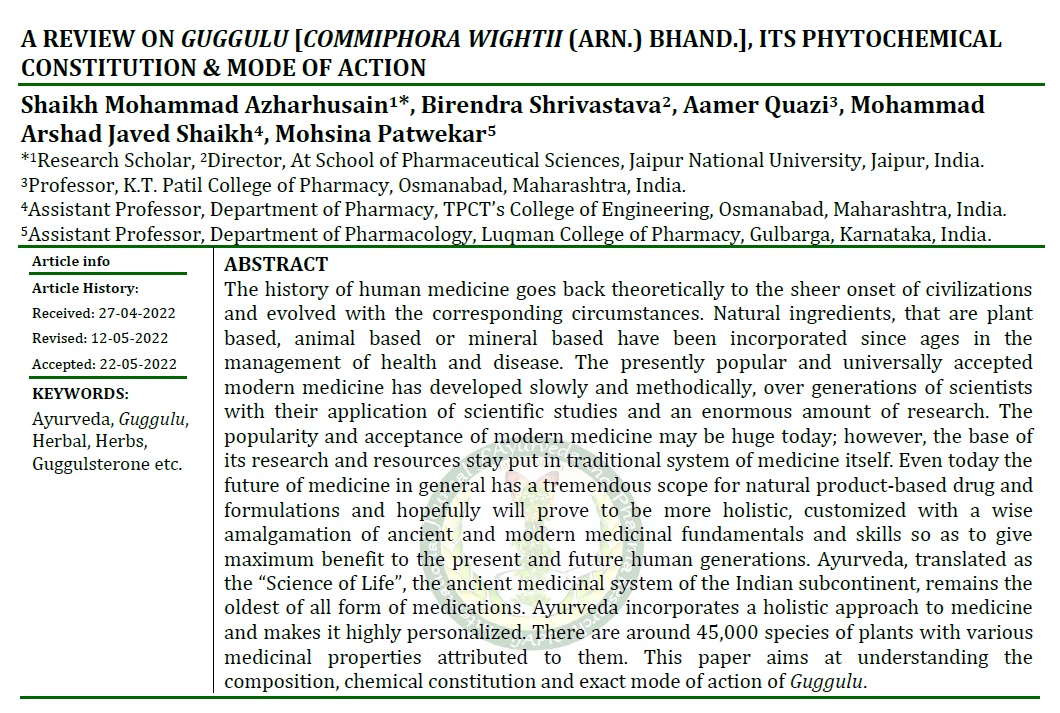A Review on Guggulu [Commiphora Wightii (ARN.) Bhand.], its Phytochemical Constitution and Mode of Action
Abstract
The history of human medicine goes back theoretically to the sheer onset of civilizations and evolved with the corresponding circumstances. Natural ingredients, that are plant based, animal based or mineral based have been incorporated since ages in the management of health and disease. The presently popular and universally accepted modern medicine has developed slowly and methodically, over generations of scientists with their application of scientific studies and an enormous amount of research. The popularity and acceptance of modern medicine may be huge today; however, the base of its research and resources stay put in traditional system of medicine itself. Even today the future of medicine in general has a tremendous scope for natural product-based drug and formulations and hopefully will prove to be more holistic, customized with a wise amalgamation of ancient and modern medicinal fundamentals and skills so as to give maximum benefit to the present and future human generations. Ayurveda, translated as the “Science of Life”, the ancient medicinal system of the Indian subcontinent, remains the oldest of all form of medications. Ayurveda incorporates a holistic approach to medicine and makes it highly personalized. There are around 45,000 species of plants with various medicinal properties attributed to them. This paper aims at understanding the composition, chemical constitution and exact mode of action of Guggulu.
Downloads

Copyright (c) 2022 International Journal of Ayurveda and Pharma Research

This work is licensed under a Creative Commons Attribution-NonCommercial-ShareAlike 4.0 International License.






